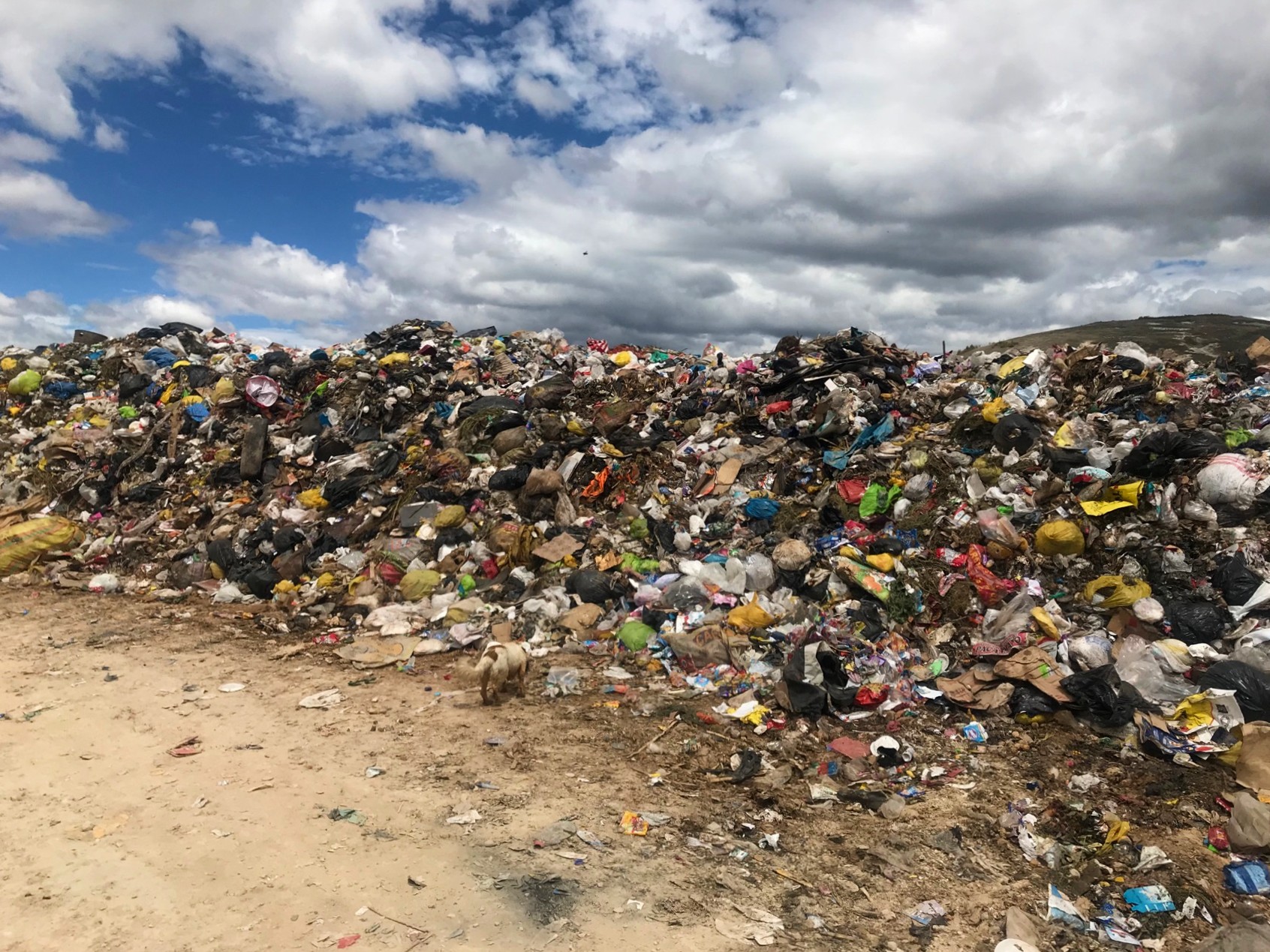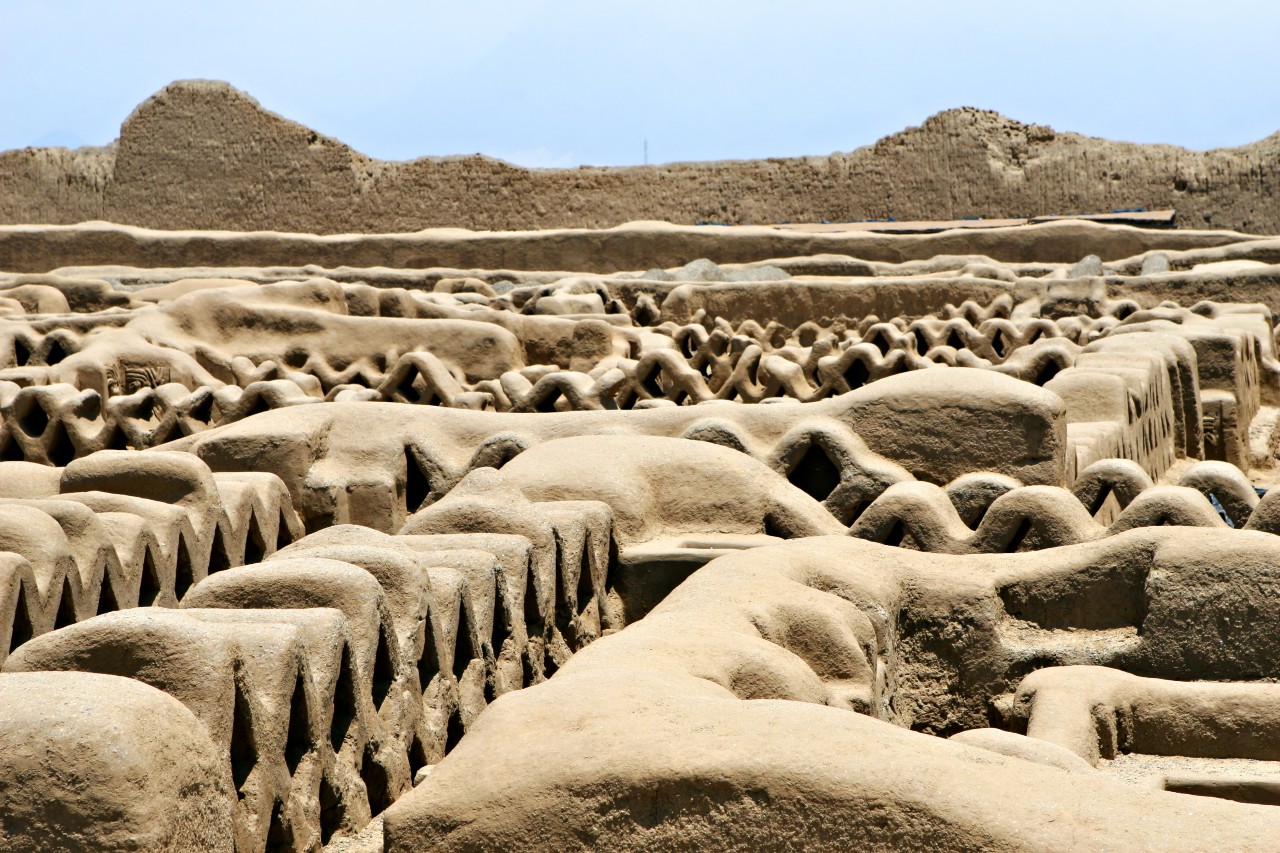The Chimu Kingdom reached its apogee in the 15th century, not long before falling to the Incas. Its capital Chan Chan, located in the once fertile river valley of Moche or Santa Catalina, was the largest earthen architecture city in pre-Columbian America. The remains of this vast city reflect in their layout a strict political and social strategy, emphasized by their division into nine ‘citadels’ or ‘palaces’ forming independent units. The Outstanding Universal Value of Chan Chan resides in the extensive, hierarchically planned remains of this huge city, including remnants of the industrial, agricultural and water management systems that sustained it.
The monumental zone of around six square kilometres in the centre of the once twenty square kilometre city, comprises nine large rectangular complexes (‘citadels’ or ‘palaces’) delineated by high thick earthen walls. Within these units, buildings including temples, dwellings, storehouses are arranged around open spaces, together with reservoirs, and funeral platforms. The earthen walls of the buildings were often decorated with friezes representing abstract motifs, and historical and religious subjects. Around these nine complexes were thirty two semi monumental compounds and four production sectors for activities such as weaving wood and metal working. Extensive agricultural areas and a remnant irrigation system have been found further to the north, east and west of the city. The Moche and Chicama rivers once supplied an intricate irrigation system via an approximately 80 kilometer long canal, sustaining the region around Chan Chan during the height of the Chimu civilisation.
This important archaeological site is threatened by people dropping garbage in restricted areas. Both visitors and local people are leaving large amounts of garbage in and around the site. Each month, over 10 tons of municipal solid waste items; plastic bottles and wrappings, glass, metals and even used diapers, are removed from the vicinity of the site. Site security is stepping up their efforts to curb the waste disposal, but people always seem to find new ways to circumvent them.
Another severe threat to the site is climate change. Most of the damage to Chan Chan during the Chimú reign was caused by El Niño storms, which occurred every 25 to 50 years. Now they occur more frequently. Scientists agree that climate change is the primary cause of the increasing rainfall. A 2007 report published by UNESCO describes the erosion of Chan Chan as “rapid and seemingly unstoppable” and concludes “global warming is leads to greater extremes of drying and heavy rainfall.” Tent-like protective structures are being erected in various parts of the city. Some friezes are being hardened with a solution of distilled water and cactus juice, while others have been photographed, then covered to protect them. Panels with pictures of the friezes allow visitors to see what the covered artwork looks like.
The wasteWOIMA® waste-to-energy power plant uses municipal solid waste as fuel thus reducing the need to dump it elsewhere. It is a carbon-neutral solution that simultaneously ensures that waste is recycled into energy efficiently, supports the local waste management practices and promotes climate action by preventing solid waste from generating methane, a greenhouse gas 25 times worse than CO2.
Read more about wasteWOIMA® power plant
Contact WOIMA, if you see yourself as collaboration partner in saving the planet. Ask more about turning waste into wellbeing with WOIMA Circular Economy Solutions.





